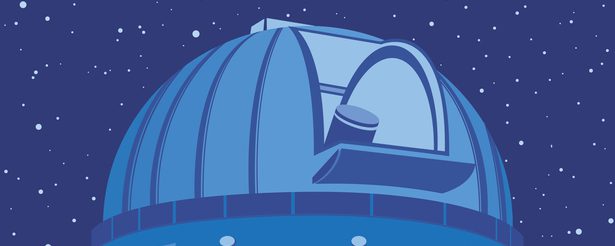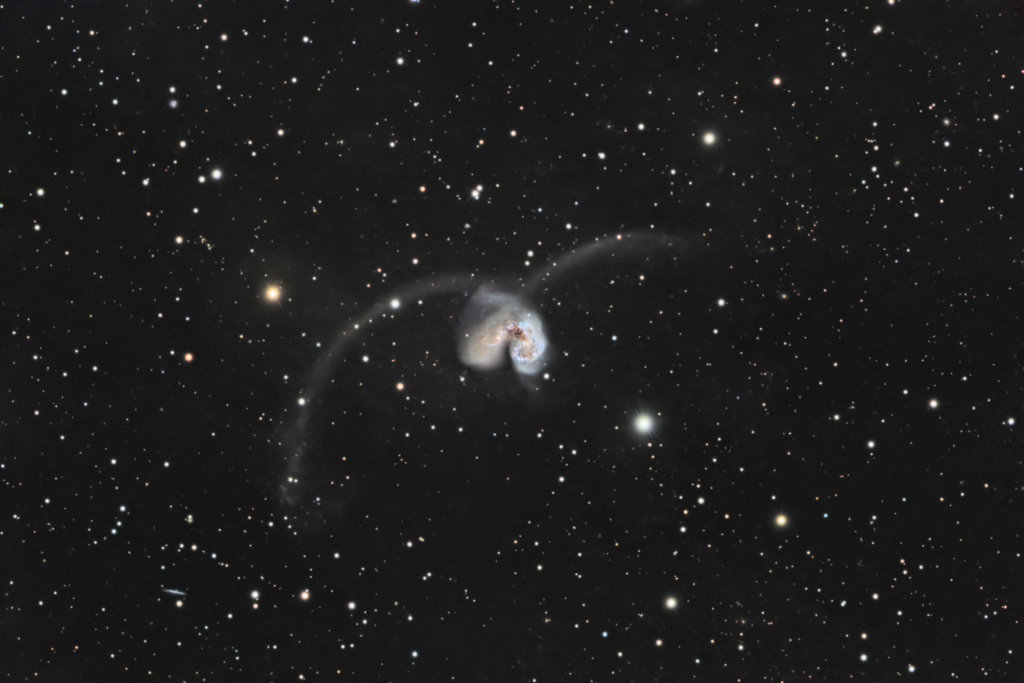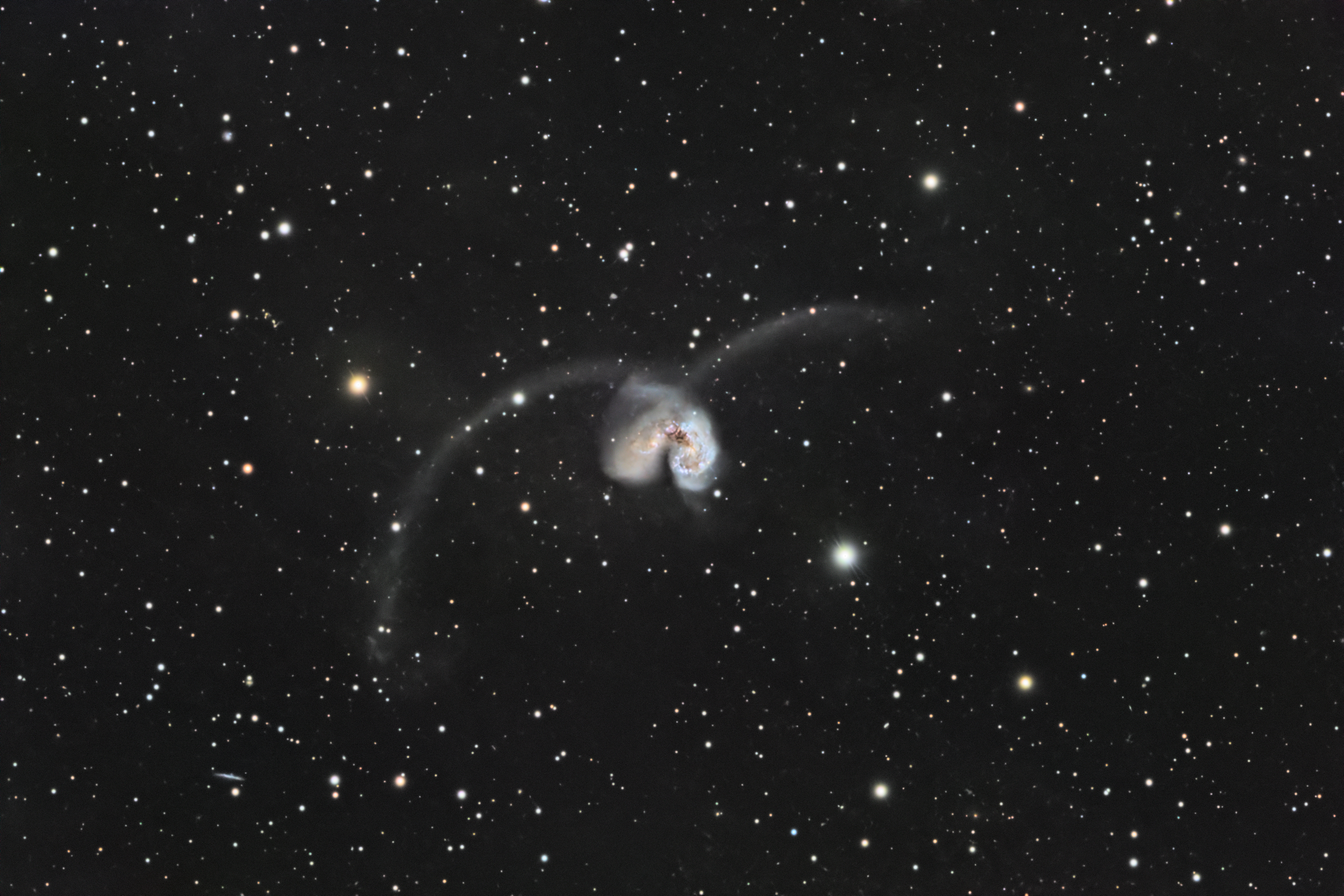
Similar Posts
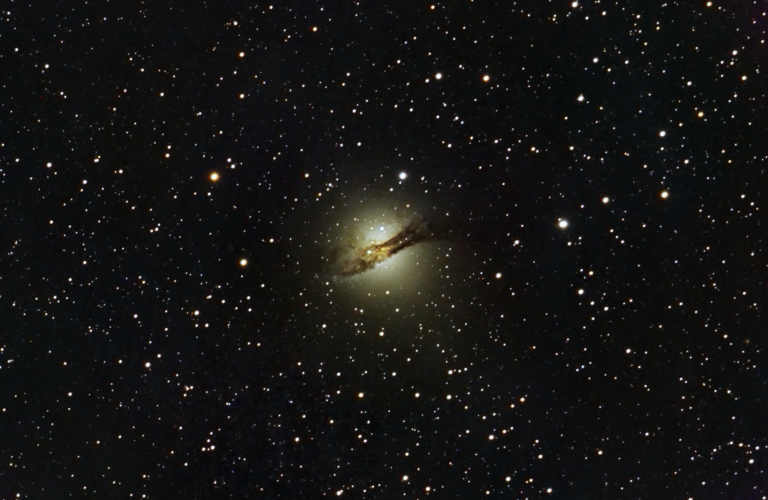
Centaurus A! A weird and challenging galaxy…
Our new home has clear views of the sky down to about 15 degrees from the horizon; which means some objects that are normally considered only visible from the Southern hemisphere just peek above our trees for a few hours. One such object is the galaxy Centaurus A; it’s an odd galaxy that looks like…
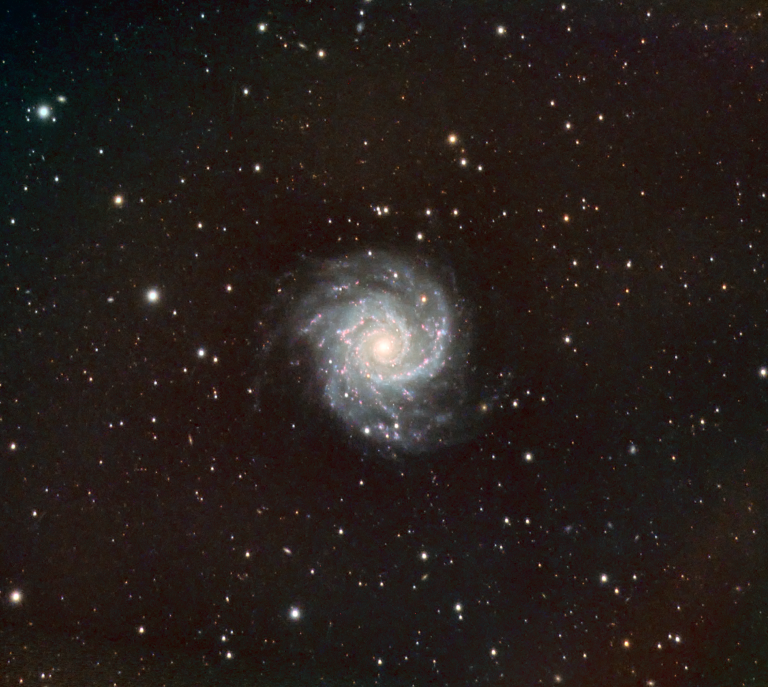
M74 – A galaxy far far away.
This galaxy is only known as M74. At 32 million light-years away, it’s about as far as you can get for a halfway decent image taken from Earth. It is a “grand design” face-on spiral galaxy. Look closely and you’ll see a few more galaxies in the background that are much more distant, and therefore…
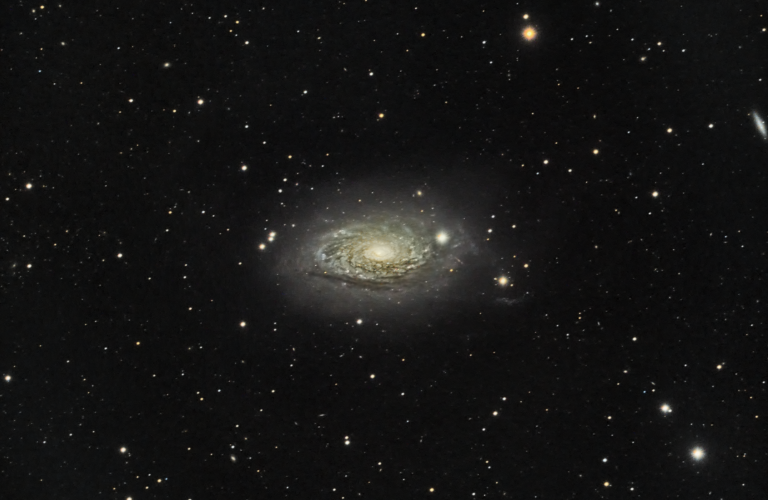
Revisiting M106 and the Sunflower
Now that our new backyard observatory is up and running, and we’re under darker skies than in our previous home, I’m revisiting some galaxies I’ve imaged before to see how things compare. Galaxies are tough… any amount of light pollution or moonlight really limits your ability to capture faint, wispy details. But the less light…
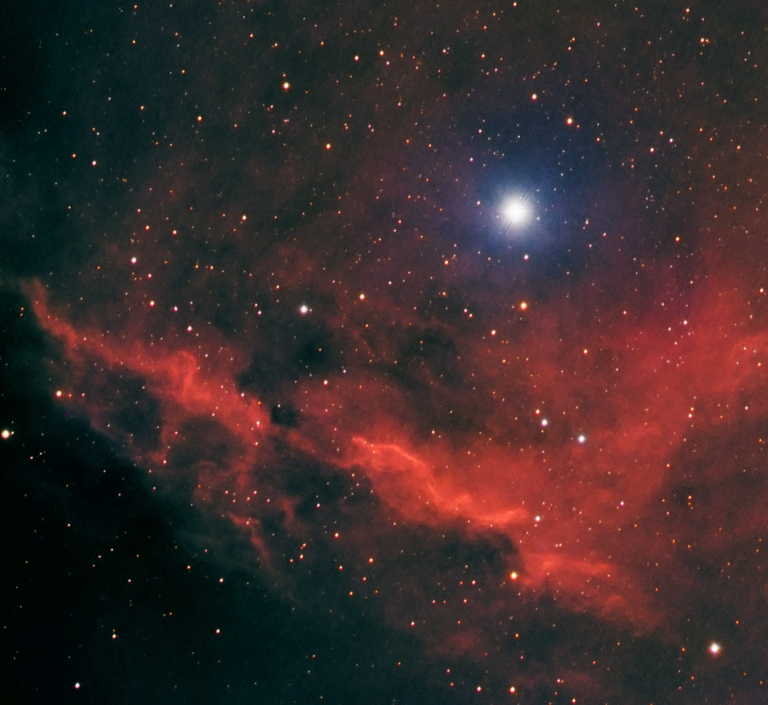
Just an obscure little cloud of hydrogen.
This nebula goes by the unassuming name of SH2-9. It’s part of a larger complex of clouds known as the Rho Ophiuchi complex, but you don’t often see people focusing on this part of it. It’s a challenge to image from my location, as it’s very low in the sky in a light-polluted direction. There…
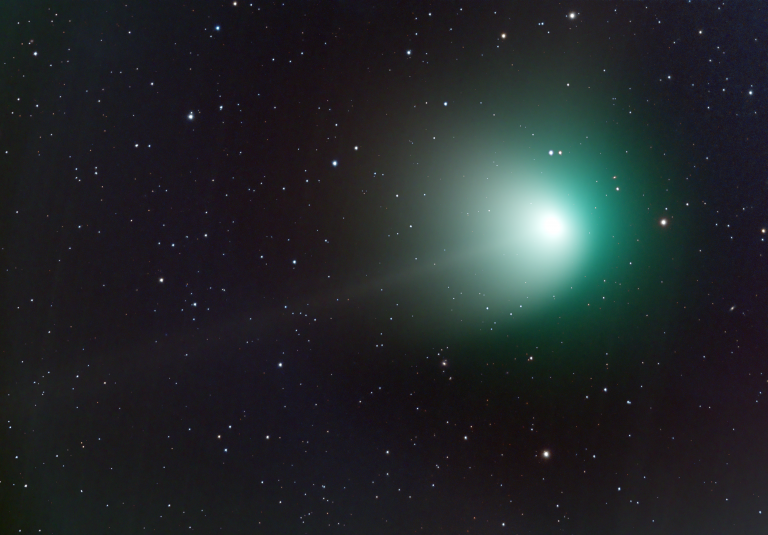
Another look at the “green comet”
I don’t know why the press has latched onto the name “the green comet” for C/2022 E3 (ZTF) – most comets are green, and it’s too dim to see any color at all if you’re viewing it through binoculars or a telescope. But through 2 hours of total exposure time, the colors do emerge, and…
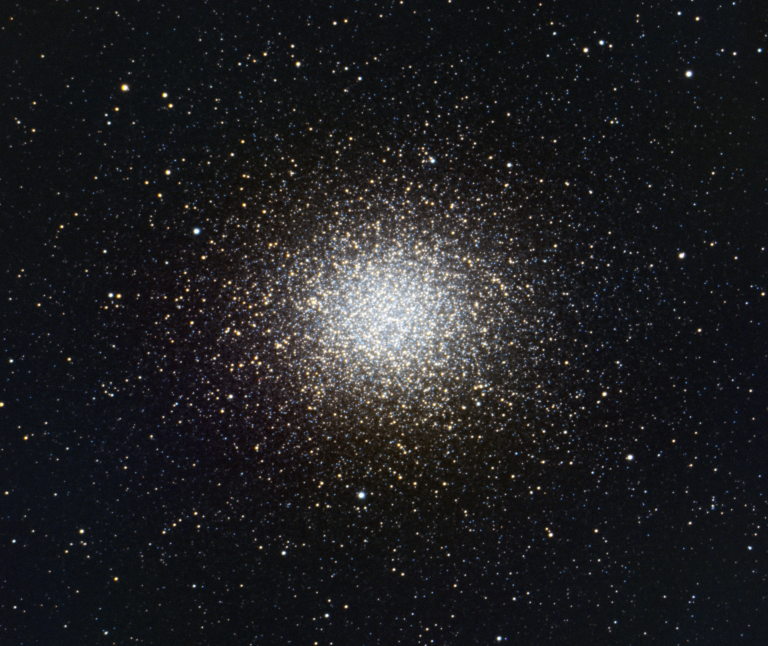
Omega Centauri – the biggest globular cluster, or is it something else?
This object was a real challenge to image. From central Florida, it only rises 13 degrees above the horizon, deep within the light-polluted murk of my Southern sky. Omega Centauri is a Southern hemisphere object, so capturing it from the Northern hemisphere requires effort. It’s worth it though – this is one of the most…
